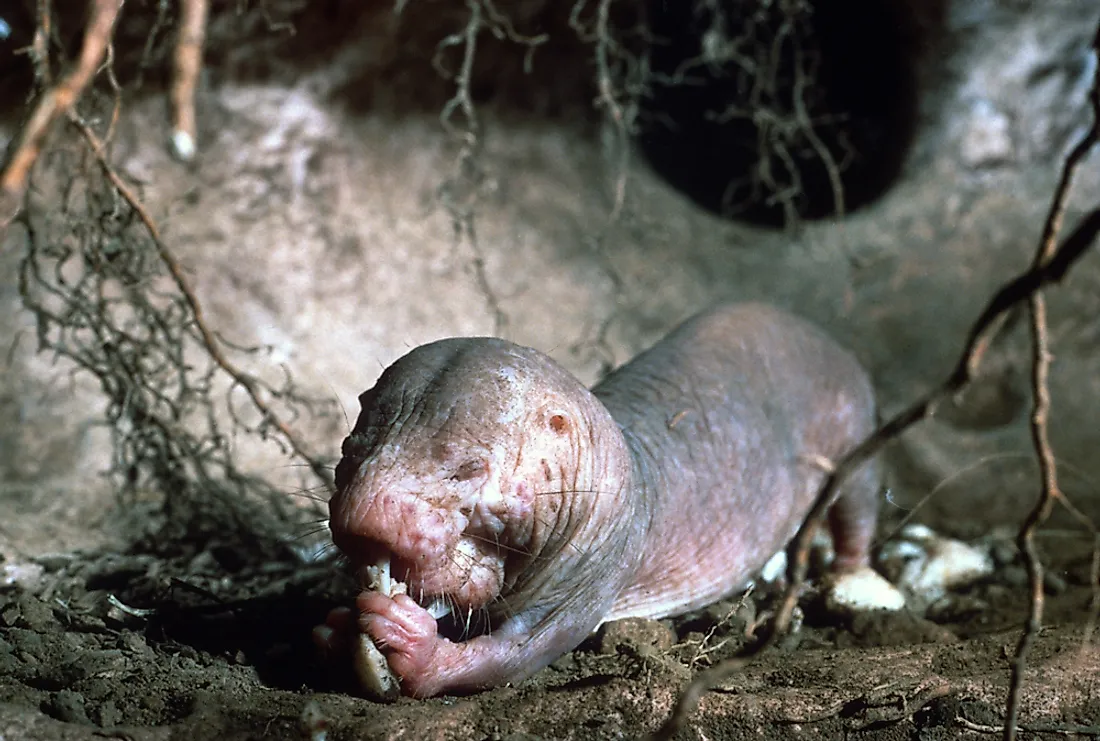Naked Mole Rat Facts: Animals of Africa

The naked mole rat is a burrowing rodent that is native to East Africa. It is easily distinguishable from other rodents because of its wrinkled yellow or pink skin, very little hair, and lack of an insulating layer in the skin. Although many find the naked mole rat not very appealing to look at, it is a fascinating creature.
5. Physical Description
It measures about 3 to 4 inches long and weighs between 1 to 1.2 ounces. The rodent has adapted to living below the ground level; it has small eyes, which makes visual acuity very poor. Its legs are short and thin but well adapted to moving below the ground. It can move forward and backward at very high speeds. It has long protruding teeth that are used for digging.
4. Habitat and Range
The rodent is native to the drier parts of the grasslands of East Africa particularly Somalia, Kenya, and southern Ethiopia. It prefers living in a colony of between 75 to 80 individuals. A colony builds a complex system of burrows that can stretch for 3 miles. A large colony makes work easier for the rodents when digging burrows or looking for food.
3. Behavior
The naked mole rat is the only mammal that exhibits eusociality. The eusocial structure in a colony is common in termites, bees, ants, and wasps. Only the queen and 1-3 males are allowed to mate and reproduce. The queen and the males reach sexual maturity after a year. The workers are sterile; their role is to maintain the nest, search for food, and respond during attacks. The colony is responsible for taking care of the pups produced by the queen; the workers prevent the pups from straying, groom them, and provide food. As the young grow, the workers increase the length of the burrows to accommodate the new generation.
2. Diet
The naked mole rat prefers feeding on large tubers. It can dig several feet below the ground in search of the tubers that can way up to 1000 times its own body weight. When a tuber is located, the entire colony gathers around it and establish a temporary colony. A single tuber provides food for the colony for weeks, months, or in some instances even years. The naked mole rat has been observed to eat the inside of a stem tuber leaving the outside intact to allow for regeneration. Its intestines contain a symbiotic bacteria that ferment fiber and allow for the digestion of indigestible cellulose that is turned into fatty acids
1. Reproduction
Only the queen and 1-3 males in a colony are allowed to mate and reproduce. The reproducing females prefer unfamiliar males to reduce the effects of inbreeding. The queen is the only female mole rat with fully mature ovaries; the rest have underdeveloped ovaries that prevent reproduction. The gestation period is about 70 days, the queen gives birth to between three and twelve pups, but in some instances, the number can rise to 28. The female wild mole rat gives birth once a year.











